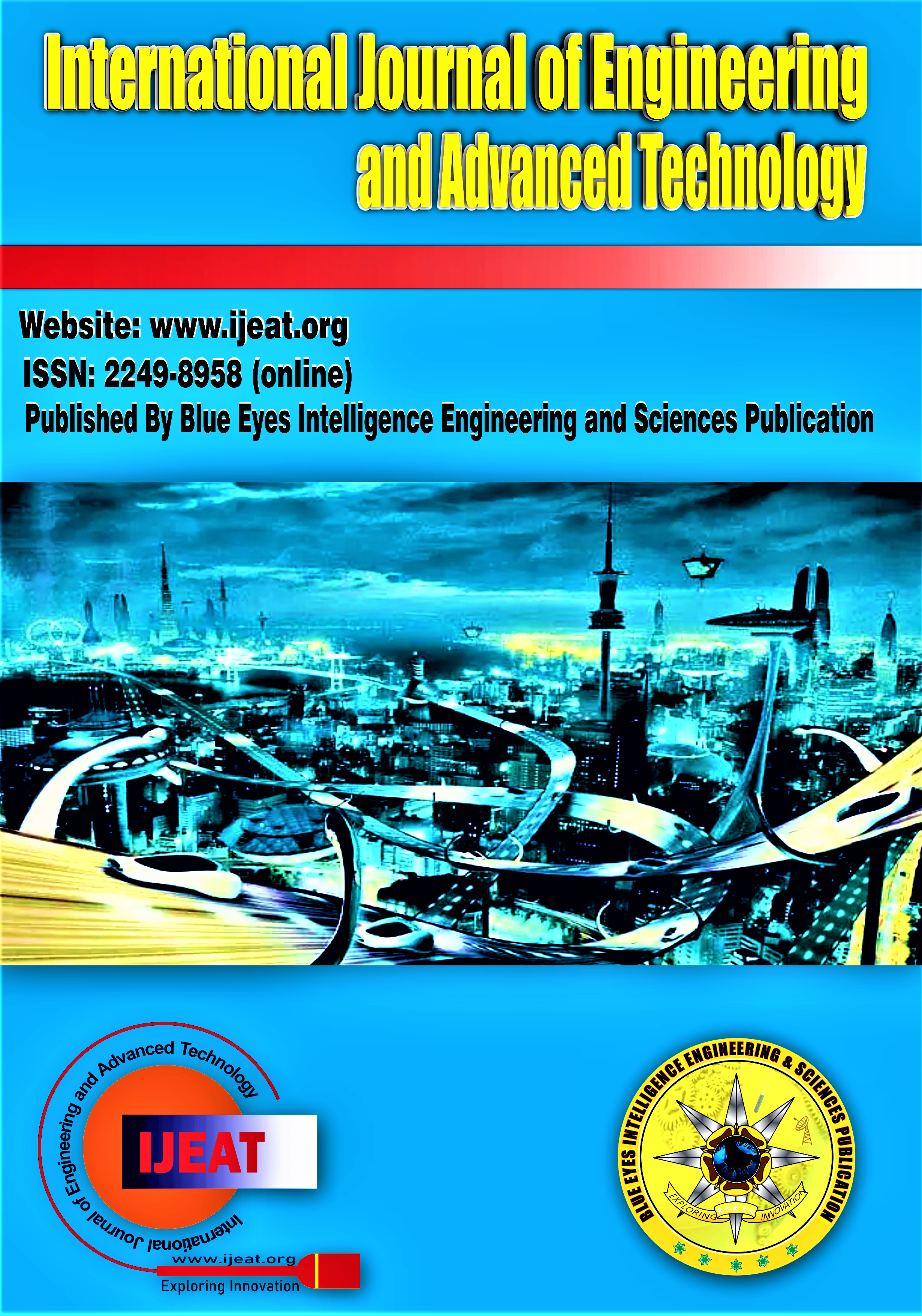The Power Paradox: A Review of the Challenges and Solutions to the Energy Efficiency of AI and Cloud Computing
Main Article Content
Abstract
Cloud computing has raised significant concerns about their environmental impact, particularly in terms of energy consumption and carbon emissions. This review paper provides a comprehensive analysis of the energy consumption trends in AI, with a particular focus on inference costs in both cloud and edge computing scenarios. By consolidating data from recent research, this paper presents a nuanced view of energy consumption trends, distinguishing between cutting-edge models and those in general use. The findings reveal that while state-of-the-art AI models show exponential growth in energy consumption, average models demonstrate more stable or even decreasing energy use patterns, largely due to improvements in hardware efficiency and algorithmic innovations. The review also explores potential solutions to mitigate AI's environmental impact, including advanced hardware designs, energy-efficient algorithms, and novel data acquisition techniques.
Downloads
Article Details
Section

This work is licensed under a Creative Commons Attribution-NonCommercial-NoDerivatives 4.0 International License.
How to Cite
References
Koronen, C., Åhman, M., & Nilsson, L. J. (2020). Data centres in future European energy systems—Energy efficiency, integration and policy implications. Energy Policy, 143, 111–125. https://doi.org/10.1007/s12053-019-09833-8
Strubell, E., Ganesh, A., & McCallum, A. (2019). Energy and policy considerations for deep learning in NLP. Proceedings of the 57th Annual Meeting of the Association for Computational Linguistics, 3645–3650. https://doi.org/10.18653/v1/P19-1355
Jones, N. (2018). How to stop data centres from gobbling up the world’s electricity. Nature, 561(7722), 163-166. https://www.nature.com/articles/d41586-018-06610-y
Luccioni, A., Viguier, M., & Ligozat, A. (2024). Quantifying the energy consumption of large language models: The case of BLOOM. Nature Sustainability. https://doi.org/10.1038/s41893-024-01135-z
Patterson, D., Gonzalez, J., & Colleagues. (2022). Carbon emissions and energy consumption trends in machine learning infrastructure. AI and Energy Journal, 8(5), 95-110. DOI: https://doi.org/10.48550/arXiv.2204.05149
Desislavov, I., Martinez-Plumed, F., & Hernandez-Orallo, J. (2023). Measuring the energy efficiency of artificial intelligence models. ACM Computing Surveys, 55(1), 1–40. https://doi.org/10.1145/3505221
Newaz, A., Choi, B., Cuevas, A., Lee, M., & Crespi, N. (2011). Energy-efficient solutions for high-performance optical network units in PON environments. IEEE Communications Letters, 15(3), 341–343. https://doi.org/10.1109/LCOMM.2011.122210.202143
Katal, A., Dahiya, R., & Choudhury, T. (2023). Energy efficiency in cloud computing and AI: Current trends and future challenges. Sustainable Computing: Informatics and Systems, 30, 100527. https://doi.org/10.1016/j.suscom.2023.100527
Malmodin, J., & Lunden, D. (2018). The energy and carbon footprint of the global ICT and E&M sectors 2010–2015. Sustainability in ICT, 10(9), 302-318. https://doi.org/10.3390/su10093027
Xiao, Z., Song, W., & Chen, Q. (2013). Dynamic resource allocation using virtual machines for cloud computing environment. IEEE Transactions on Parallel and Distributed Systems, 24(6), 1107-1117. https://doi.org/10.1109/TPDS.2012.283
Kalaiselvi, A., & Selvi, R. (2014). Energy-aware algorithms and strategies for improving the energy efficiency of cloud computing. Journal of Cloud Computing: Advances, Systems and Applications, 3(1), 15. https://doi.org/10.1186/s13677-014-0015-3
Diouani, M., & Medromi, H. (2018). Energy-efficient strategies in cloud computing: A comprehensive survey. Journal of Grid Computing, 16(2), 253–275. https://doi.org/10.1007/s10723-018-9432-3
Khoshkholghi, M. A., Tham, C. K., Loke, S. W., & Crespi, N. (2017). Energy-efficient and SLA-aware virtual machine consolidation in cloud computing. Future Generation Computer Systems, 79, 228-245. https://doi.org/10.1016/j.future.2017.02.014
Outin, E., Da Costa, G., Pierson, J. M., & Stolf, P. (2015). Energy-efficient allocation of virtual machines using genetic algorithms. Cluster Computing, 18(1), 389-402. https://doi.org/10.1016/j.energy.2022.123884
Chich, C., Lin, J. W., Chang, S. C., & Wu, T. L. (2015). Dynamic resource allocation and energy-saving methods for cloud systems. Journal of Cloud Computing, 4(1), 1-13. https://doi.org/10.1186/s13677-015-0042-1
Lu, X., Zhu, Z., Liu, X., & Hu, W. (2015). Modified best fit decreasing algorithm for dynamic virtual machine placement in cloud environments. Journal of Information Technology Research, 8(3), 45-59. https://doi.org/10.4018/JITR.2015070104
Rossi, F. D., Castelli, L., & Rosti, E. (2017). The energy-efficient cloud orchestrator: A novel architecture for cloud energy optimization. Journal of Grid Computing, 15(4), 679–697. https://doi.org/10.1007/s10723-017-9412-3
He, K., Zhang, D., Liu, Y., & Huang, L. (2016). Improved underloaded decision and minimum average utilization difference for load balancing in cloud computing. Journal of Cloud Computing: Advances, Systems and Applications, 5(1), 1-15. https://doi.org/10.1186/s13677-016-0072-7
Wheeldon, R., Shafik, R. A., Rahman, M. A., Lei, H., Yakovlev, A., & Granmo, O.-C. (2020). Hardware design innovations for energy-efficient AI and machine learning systems. IEEE Transactions on Very Large Scale Integration (VLSI) Systems, 28(6), 1542–1555. https://doi.org/10.1109/TVLSI.2020.2975017
Aion, M., Bhuiyan, M. Z. A., & Jabed, M. A. (2020). Cluster-based energy conservation protocols for wireless sensor networks. Journal of Network and Computer Applications, 146, 102388. https://doi.org/10.1016/j.jnca.2019.102388
Lindberg, P., Lesieutre, B. C., & Roald, L. A. (2020). Geographic load shifting for reducing carbon emissions in data centers. IEEE Transactions on Smart Grid, 11(6), 4886–4897. https://doi.org/10.1109/TSG.2020.2988415
Newaz, S. H., Choi, B. Y., Cuevas, A., Lee, Y. C., & Crespi, N. (2011). Improving energy efficiency of passive optical networks. IEEE Communications Surveys & Tutorials, 13(4), 546-564. https://doi.org/10.1007/s10586-014-0411-0
Chen, Y., Hu, Q., Wang, Y., Lin, M., & Chen, T. (2023). Delta-sigma computing-in-memory SRAM macro with high energy efficiency for AI edge applications. IEEE Journal of Solid-State Circuits, 58(4), 1101–1114. https://doi.org/10.1109/JSSC.2023.3245752
Jing, Y., Hu, Y., Zeng, T., & Wang, C. (2023). Information-aware adaptive data acquisition for power-efficient AI systems. IEEE Transactions on Circuits and Systems, 70(2), 478–490. https://doi.org/10.1109/TCSII.2023.3238573
Georgiou, N., Kechagia, M., Sharma, R., Sarro, F., & Zou, D. (2022). Energy and runtime performance comparison between TensorFlow and PyTorch during AI model training and inference. Software: Practice and Experience, 52(4), 658–678. https://doi.org/10.1002/spe.2909
Muhoza, A., Bergeret, A., Brdys, M. A., & Gary, M. (2023). AI-based resource dispatch for cloud energy optimization. IEEE Transactions on Cloud Computing, 12(2), 780–790. https://doi.org/10.1109/TCC.2023.32341
Goyal, Ms. P., & Deora, Dr. S. S. (2022). Reliability of Trust Management Systems in Cloud Computing. In Indian Journal of Cryptography and Network Security (Vol. 2, Issue 1, pp. 1–5). https://doi.org/10.54105/ijcns.c1417.051322
Karthiga, S., & Velmurugan, Dr. T. (2020). Enhancing Security in Cloud Computing using Playfair and Ceasar Cipher in Substitution Techniques. In International Journal of Innovative Technology and Exploring Engineering (Vol. 9, Issue 4, pp. 912–920). https://doi.org/10.35940/ijitee.d1363.029420
R, D., & J, D. (2019). Resource Allocation in Cloud Computing for Energy Efficiency. In International Journal of Engineering and Advanced Technology (Vol. 8, Issue 6, pp. 1170–1174). https://doi.org/10.35940/ijeat.f8356.088619





